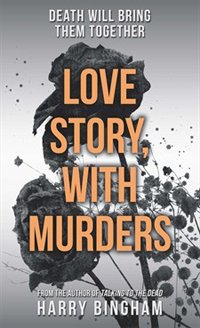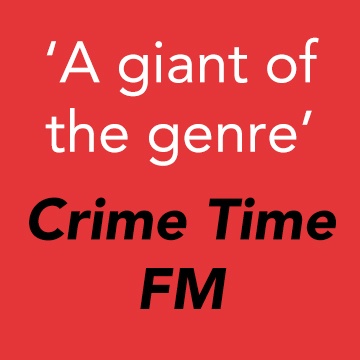 Written by Harry Bingham — In 2012 Harry Bingham introduced Detective Constable Fiona Griffiths to crime fiction – and it was a stellar meeting. In Talking To The Dead, we learned that the Cardiff detective had a serious mental condition called Cotard’s Syndrome, which caused her to spend a significant period during her teenage years institutionalised. It has left her a legacy of distinctly unusual thought processes and insights – especially for a novice copper. Now she is back.
Written by Harry Bingham — In 2012 Harry Bingham introduced Detective Constable Fiona Griffiths to crime fiction – and it was a stellar meeting. In Talking To The Dead, we learned that the Cardiff detective had a serious mental condition called Cotard’s Syndrome, which caused her to spend a significant period during her teenage years institutionalised. It has left her a legacy of distinctly unusual thought processes and insights – especially for a novice copper. Now she is back.
An old lady has died, and her house and garage are being cleared. The workers make a discovery. In a chest freezer, beneath the bags of frozen runner beans, and lamb cuts from the butcher, is a bag containing a leg of a different sort – that of a young woman. Across suburban Cardiff, in garden sheds and loft spaces, more body parts emerge, and it seems that the remains are all that is left of a university student who also worked as an exotic dancer. Then, throwing an entire tool kit into the proverbial works, male body parts are found too. This time, they belong to a North African metallurgist who was working for a firm linked to the international arms trade. Fiona’s boss, Rhiannon ‘bloody’ Watkins is the Ice Queen, but her respect for the abilities of her wayward apprentice gives Fiona license to try to link the two deaths – and the investigation brings them both to a state of revelation.
Fiona’s background is as off-kilter as her demeanor. Birth parents unknown, she was found abandoned as a toddler in the car of a benign but manipulative crime boss. He and his wife adopted Fiona, and brought her up as their own. Tom Griffiths has been responsible for all manner of shady dealings across South Wales over a number of years, but despite having a police file inches thick, has never been convicted. Her dangerously competent step-father’s background adds a delicious frisson to Fiona’s dealings with her colleagues.
Part of Fiona’s affliction – or gift – is that she has no intuitive response to emotional signals from others, and so she must constantly analyse, reason and decide how to react to people. Sometimes – when she is dealing with colleagues, for example – she bothers. At other times she actively chooses not to turn on the radar, and this allows her to succeed in situations where people with more conventional sensibilities would flounder like when she sits, a lone female, for several hours in the audience of one of her father’s lap-dancing clubs.
They say there is nothing new under the sun. Aficionados of various crime fiction genres can probably trace stereotypes across the years from Sherlock Holmes to Jack Reacher, with forests of print in between. I have to say that in a lifetime of reading crime fiction I have never come across anyone quite like Fiona Griffiths. Older readers might have to suppress their maternal or paternal instincts; young men (and women) may, quite simply fancy her to death, despite Bingham never giving us too much idea what she really looks like. Neither does she disappoint those who like a good fight and the occasional bout of random violence. In short, this is an enthralling next stage in what promises to be a brilliant fictional career. The love story in the title? It may be Fiona’s relationship with her patient and smitten boyfriend, but it is more likely to involve us readers – smitten by this remarkable young woman. Read this book. Enjoy every syllable. Hold your breath, and tick off the weeks until the next one.
Love Story, With Murders, is out on 20 June. You can read our interview with Harry Bingham here.
Orion
Print/Kindle/iBook
£6.49
CFL Rating: 5 Stars









